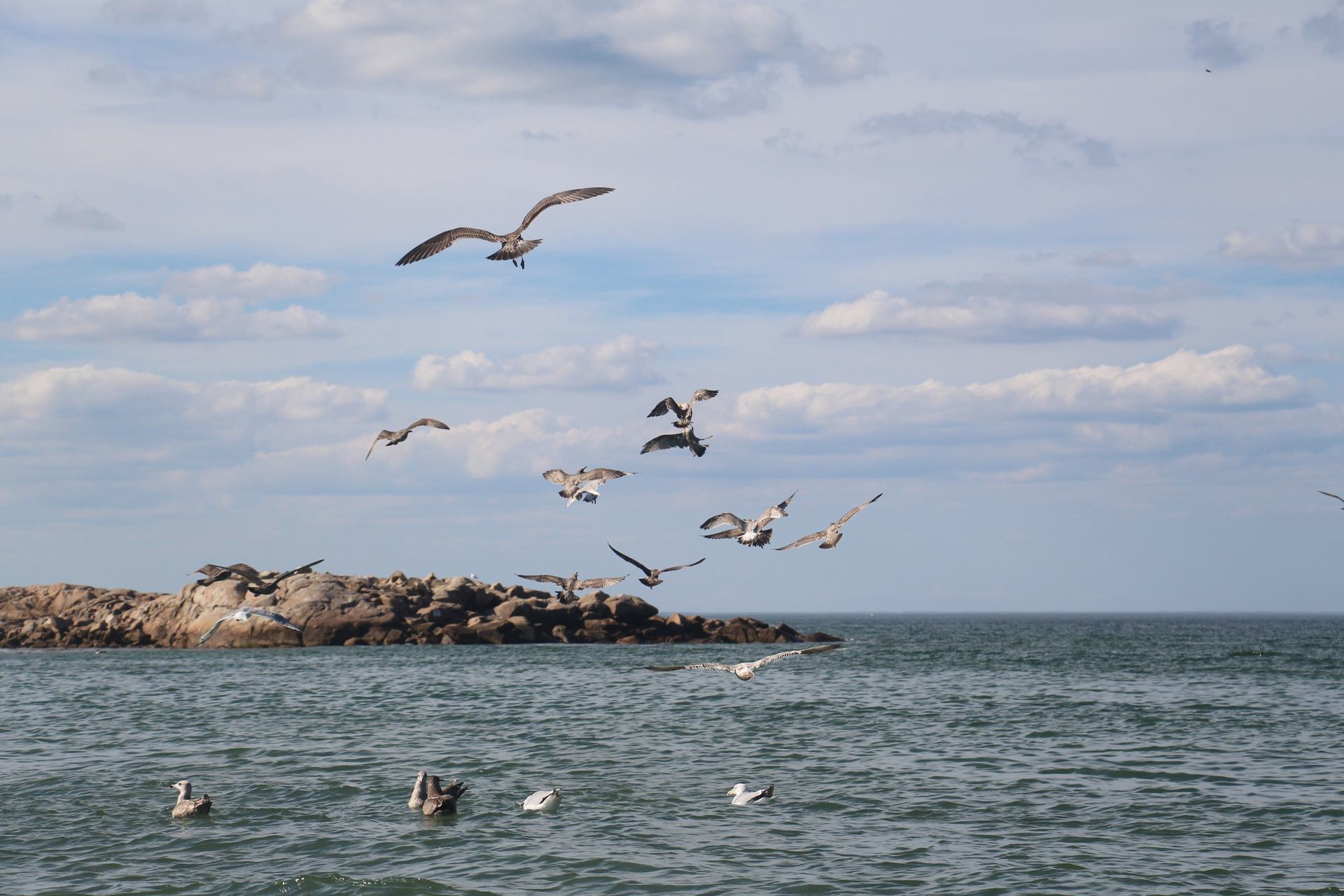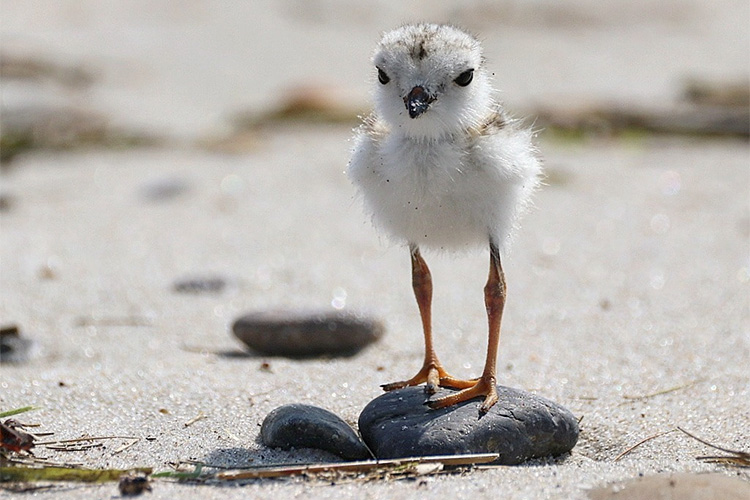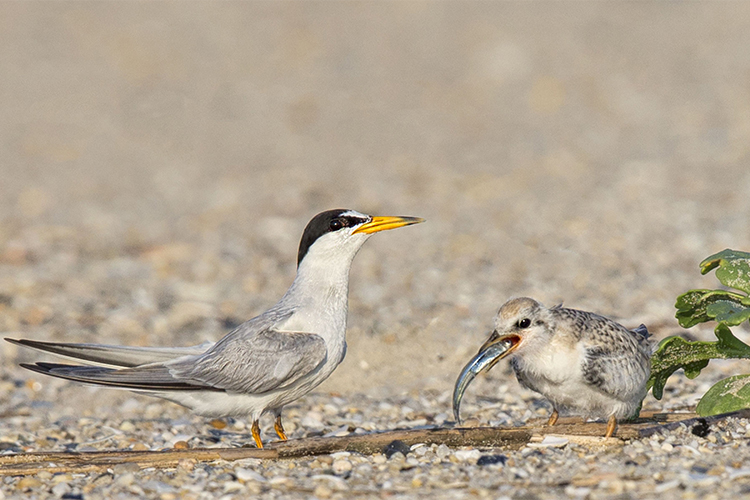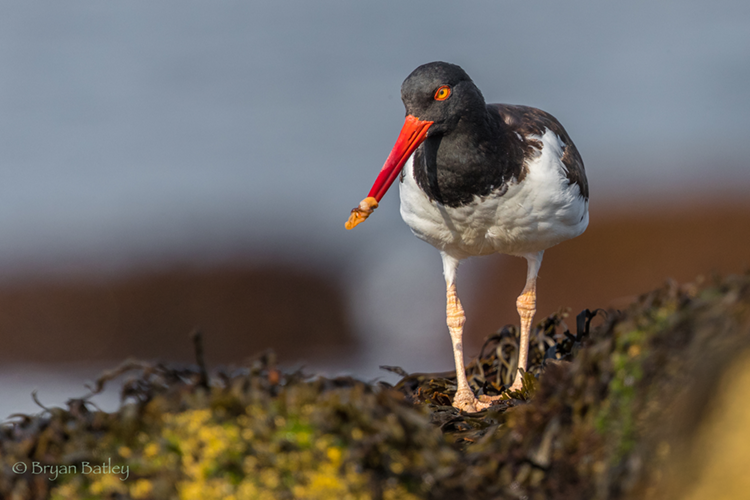With 1,519 miles of shoreline in Massachusetts, there are plenty of places to feel the warm sand in your toes, but these hot spots are more than just a playground for visitors and residents. They are critical homes to wildlife, making it so important to be a responsible beachgoer.
Crowded Coasts
Every year, thousands of people spend their summer vacations on the beautiful coastlines of Massachusetts. From the plentiful 43,000 acres of public beach access on Cape Cod to the urban beaches at Revere and Winthrop where crowds gather to escape the city heat, you can almost always expect the shoreline to be packed with people.
However, many species of wildlife also live, laugh (in the case of gulls), and love in these same spaces. As you enjoy splashing in the waves and soaking up the sun, remember to be mindful of other creatures that inhabit beaches and coastal habitats.
Sharing the Shores
At first, you might not notice the little Piping Plover as it weaves between beach blankets, but these shorebirds are busy raising their young. With white and gray/brown backs, Piping Plovers blend perfectly into the sand, especially the small chicks that run about feeding, almost invisible to even the keenest observer. Although Piping Plovers have slightly rebounded in the past couple of years, they are still listed as a threatened species on both a state and federal level.
Just like the Piping Plover, terns and American Oystercatchers also prefer the sandy, open beaches to feed, frolic, and raise their chicks. Terns live in colonies, with Least and Common terns seeking spaces to mate and raise their brood in small and large groups. You won’t miss a flock of Common or Least terns, as they will fiercely defend their colony, sometimes even diving at unsuspecting beach walkers.
In a colony of terns, keep an eye out for Roseate terns, which are marked by their long white tail feathers that split into two strands. If you get too close, you may hear them grumble an alarm call, which can sound like a cloth being ripped.
If you’re lucky enough to share the beach with American Oystercatchers, you’ll be able to tell them apart by their larger size and unmistakable red and orange bills. On Cape Cod’s beaches and islands, you may even hear their loud pic-pic-pic song.
Be a Nature Hero
Help protect the birds and wildlife that live on the shoreline while enjoying your day at the beach. Respect the post-and-twine fencing erected by Mass Audubon’s Coastal Waterbird Program and other public and private beach managers. These fences are intended to keep people and pets away from bird nesting areas, because even well-behaved dogs can increase avian stress levels. For best practice, keep your dog off the beach or walk them on a leash along the water’s edge.
The clumps of seaweed along the water line may seem like debris but they are a vital source of food for birds. Small invertebrates can be found under the organic material, so try to resist the urge to throw away seaweed or clean up the beach of any natural materials. Nature can seem untidy, but there is a method to the messy madness.
Thinking about collecting rocks and shells to remember your trip? Removing them from the beach can further erosion and reduce habitat. With the increase in storm frequency and intensity from climate change, exposed beaches need rocks to stay protected from extreme weather events. Plants also need to stay rooted as they help support the dunes. Damage by foot and vehicles can undermine beach structure and erase the important barrier that dunes provide.
Garbage, however, can and should be removed from the beach. The leftovers from your sandwich or chips are irresistible to skunks, rats, and other predators that stalk the beach for shorebird eggs, adults, and chicks. Carry in and carry out your trash to dissuade predators from prowling and wildlife from ingesting or getting tangled in it. Don’t wait for someone else to pick it up; be a waste removal warrior by bringing a bag to clean up the coast.
No matter which beach you flock to, play with caution and awareness so that we can all share the shore.
Learn More and Get Involved
Check out the work Mass Audubon is doing to preserve wildlife habitat. Join a Mass Audubon education program to learn more about the wildlife and wildlands along the coast. And use your voice to advocate for protection of these favorite places.
This article was featured in the Summer 2022 issue of Explore, our quarterly magazine for members.






